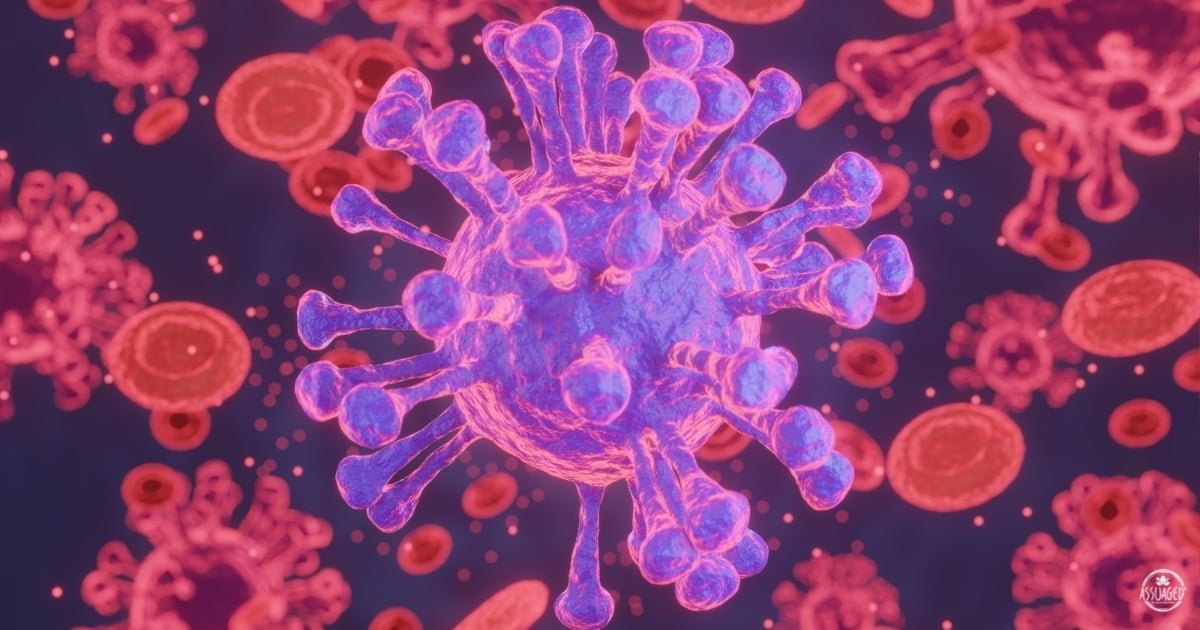Every minute, more than one million sexually transmitted infections (STIs) are acquired around the world, yet conversations about sexual health often remain buried under stigma and silence.
Globally, the World Health Organization (WHO) estimates that over one million new curable sexually transmitted infections, such as chlamydia, gonorrhea, syphilis, and trichomoniasis, are acquired every single day. This alarming reality highlights a silent epidemic that is affecting millions of people across all ages, genders, and backgrounds.
Sexually transmitted diseases (STDs) are not just private matters; they are serious public health threats that demand global attention, honest conversations, and urgent action. In this blog, we will explore why STD rates are rising, who is most at risk, and what we can do to combat this growing crisis.[1]
What are Sexually Transmitted Diseases/infections?
Sexually Transmitted Diseases (STDs), also known as Sexually Transmitted Infections (STIs) or venereal diseases, are infections that are primarily spread through sexual contact. This includes vaginal, anal, and oral sex, and sometimes even intimate skin-to-skin contact. STIs can be caused by various pathogens, including:
-
Bacteria: Examples include Chlamydia, Gonorrhea, and Syphilis.
-
Viruses: Examples include Human Papillomavirus (HPV), Herpes Simplex Virus (HSV), and Human Immunodeficiency Virus (HIV).
-
Parasites: An example is Trichomoniasis.
It's important to note that a person can be infected with an STI and have no symptoms, meaning the "infection" may not yet have developed into a noticeable "disease." However, they can still transmit the infection to others.[1]
STDs Are a Significant Public Health Concern for Several Reasons
Health Complications:
Untreated STDs can lead to serious and long-term health problems. For example:
-
Infertility: Chlamydia and gonorrhea can cause Pelvic Inflammatory Disease (PID) in women, which can damage the fallopian tubes and lead to infertility. They can also cause epididymitis in men, potentially affecting fertility.
-
Pregnancy Complications: STDs can cause ectopic pregnancies, premature birth, and stillbirths. They can also be transmitted to the baby during pregnancy or childbirth, causing serious health issues for the newborn.
-
Increased Risk of HIV: The presence of other STDs, particularly those that cause open sores, can increase the risk of both acquiring and transmitting HIV.
-
Certain Cancers: Some types of HPV can cause cervical, anal, penile, and throat cancers.
-
Other Long-Term Effects: Syphilis, if left untreated, can damage the brain, nerves, eyes, heart, and other organs. Herpes can cause recurrent painful outbreaks.[2]
Prevalence:
STDs are very common. Millions of new infections occur in the United States each year, with young people being particularly affected.
Economic Burden:
The costs associated with treating STDs and their complications are substantial. Prevention and early detection are crucial for reducing this burden.
Social and Emotional Impact:
The stigma associated with STDs can cause significant emotional distress, shame, and difficulties in relationships. Open communication and destigmatization are essential.[3]

Recent Trends and the Global Health Burden of STIs
STD rates remain at crisis levels in the United States and globally, with some infections at historic highs despite signs of stabilization in recent data. In 2023, over 2.4 million cases of chlamydia, gonorrhea, and syphilis were reported in the U.S., according to CDC data.
- Chlamydia: Over 1.6 million cases
- Gonorrhea: Over 600,000 cases
- Syphilis (all stages): Over 209,000 cases- the highest number since 1950
Globally, new syphilis cases among adults aged 15-49 increased by more than 1 million in 2022, reaching 8 million, with the steepest increases in the Americas and African regions. Congenital syphilis (when the infection is passed from mother to baby) remains a severe concern, with 3,882 cases and 279 infant deaths or stillbirths reported in the U.S. in 2023.
While overall STI rates in the U.S. dropped by 1.8% in 2023 compared to 2022, the national rate is still 90% higher than in 2004, and syphilis rates remain at historic highs. [4]
Major Sexually Transmitted Diseases
Syphilis
Syphilis cases, including congenital syphilis, are at their highest levels in decades. The increase is especially pronounced in the Americas and African regions globally, and among MSM and minority groups in the U.S.
Gonorrhea
After years of increases, gonorrhea cases in the U.S. declined by 7.2% in 2023, but rates remain high, especially among MSM and young women.
Chlamydia
Chlamydia remains the most common bacterial STD, with over 1.6 million cases in 2023. Young women, particularly those aged 15-19, are at the highest risk.
HIV
While new HIV infections have declined slightly, key populations, people who inject drugs, sex workers, transgender individuals, and people in prisons continue to experience much higher rates, accounting for 55% of new infections globally.[5]
Cause of Spread
Lack of Awareness and Education
Many people, especially youth and young adults, have inadequate knowledge about STDs, their symptoms, transmission, and prevention methods. This lack of awareness is compounded by insufficient sexual health education and persistent cultural taboos around discussing sexual health.
Increase in Casual and Risky Sexual Behavior
Risky practices such as unprotected sex, multiple sexual partners, and substance use during sex have increased, particularly among young people and certain key populations. These behaviors raise the risk of STD transmission and are difficult to address through traditional prevention strategies.
Misinformation and Stigma
Stigma, embarrassment, and fear of judgment discourage individuals from seeking testing, treatment, or even discussing sexual health. Misinformation and social media shaming further amplify these barriers, leading to delayed care and continued spread of infections.
Access Barriers to Healthcare
Many people face obstacles to accessing STD testing, treatment, and prevention services. These include financial barriers, limited clinic availability, lack of insurance, and underfunded public health infrastructure. The COVID-19 pandemic further disrupted access to sexual health services.
Drug Resistance to Antibiotics
Growing resistance to antibiotics, especially in infections like gonorrhea, is making some STDs harder to treat and control. This challenge requires ongoing research, development of new treatments, and careful management of existing antibiotics.[6]

Real-World Impacts
Fertility Problems
Untreated STDs can cause pelvic inflammatory disease (PID), scarring, and damage to the reproductive tract, leading to infertility in both women and men.
Pregnancy Complications
STDs can result in ectopic pregnancy, premature birth, stillbirth, and serious health problems for the newborn, including infection, low birth weight, and congenital abnormalities.
Mental Health Burden
Living with an STD can lead to significant stress, shame, isolation, and depression, and there is a strong association between STDs and mental health disorders, especially in adolescents
Increased HIV Transmission
Having an STD increases the risk of acquiring or transmitting HIV, as infections can make it easier for the virus to enter the body and spread
Prevention and Control
To effectively combat the rising STD crisis, public health needs to implement comprehensive, inclusive sex education that covers consent, healthy relationships, contraception, and STD prevention for all populations.
Normalizing regular STD testing as a routine part of healthcare can help identify and treat infections early, while providing free condoms and access to PrEP removes barriers to proven prevention tools. Expanding community-based outreach clinics, especially in underserved areas, ensures confidential and accessible testing, treatment, and counseling for those most at risk.
Finally, investing in research for new STD vaccines is crucial, as vaccines for infections like chlamydia, gonorrhea, and syphilis would be transformative in preventing disease and addressing the growing challenge of drug resistance.














